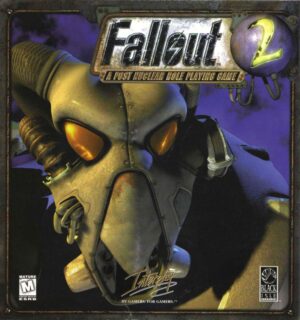Retro Replay Review
Gameplay
.kkrieger: Chapter 1 delivers a surprisingly robust first-person shooter experience considering its minuscule 97 KB footprint. At its core, the game employs familiar FPS mechanics: move forward, backwards, strafe left and right, and use the mouse to aim and look around. Despite the size constraints, controls feel tight and responsive, giving players the freedom to strafe, dodge, and engage enemies seamlessly.
(HEY YOU!! We hope you enjoy! We try not to run ads. So basically, this is a very expensive hobby running this site. Please consider joining us for updates, forums, and more. Network w/ us to make some cash or friends while retro gaming, and you can win some free retro games for posting. Okay, carry on 👍)
Enemy encounters in .kkrieger are straightforward but effective. While the AI doesn’t exhibit advanced tactics or complex behaviors, foes present a satisfying challenge through sheer numbers and well-timed ambushes. The steady flow of weapons and power-ups scattered throughout the level keeps combat fresh, encouraging players to explore every corridor in search of ammo or health boosts.
Level design in Chapter 1 blends open combat arenas with narrow corridors, promoting both run-and-gun and cautious, tactical playstyles. Procedural generation techniques dynamically stitch together modular level pieces, resulting in environments that feel coherent yet retain replay value. Even on modest hardware, performance remains smooth, demonstrating how elegant programming can overcome resource limitations.
Graphics
Graphically, .kkrieger stands as a testament to procedural art. Instead of storing textures and models directly, it runs algorithms at startup to generate everything in real time. The result is a distinctive, slightly stylized aesthetic: walls have a subtle noise pattern, and object edges exhibit a charming roughness rather than pixel-perfect precision.
Lighting effects, including dynamic shadows and colored light sources, add depth to each scene. While these visuals may not match the fidelity of larger titles like Quake or Unreal, they deliver an unexpected richness given the extreme size constraint. Watching the game paint its world on load offers a fascinating behind-the-scenes glimpse into demoscene ingenuity.
Despite its procedural roots, .kkrieger’s textures and models avoid glaring repetition. A variety of wall panels, floor tiles, and props rotate through the environment, helping each playthrough feel a bit different. Frame rates stay stable even in hectic encounters, proving that clever code can outshine raw asset bulk when it comes to fast-paced action.
Story
True to its origins as a 96k competition entry, .kkrieger: Chapter 1 forgoes a traditional narrative structure. There is no elaborate storyline or character backstory; instead, the game drops players into a single combat trial where survival and exploration are the main goals. This streamlined approach keeps the focus squarely on gameplay and technical wizardry.
While there is no explicit plot, environmental cues hint at a larger world. Occasional graffiti, scattered debris, and industrial architecture suggest a dystopian or abandoned facility setting. These visual breadcrumbs offer players room to imagine their own context, turning each corridor into a canvas for personal storytelling.
The absence of scripted cutscenes and dialogue may disappoint players seeking narrative depth. However, for those intrigued by demoscene culture, the “story” lies in the code itself—an invitation to appreciate how every asset, from geometry to sound effects, arises from compact, procedural routines rather than preloaded files.
Overall Experience
.kkrieger: Chapter 1 is as much a technical showcase as it is a playable game. For enthusiasts of the demoscene and indie development, it offers a masterclass in squeezing maximum content out of minimal resources. The novelty of watching a full-fledged 3D world materialize from under 100 KB never gets old, and the immediate gameplay loop is surprisingly engaging.
Casual players may find the lack of a structured campaign or narrative arc limiting, but the solid core mechanics and unique visual style compensate for these omissions. The game’s brevity—often under 20 minutes to complete Chapter 1—makes it ideal for quick sessions or for showing off to friends who doubt what can be achieved in a tiny executable.
Ultimately, .kkrieger: Chapter 1 excels as a conversation piece and a demonstration of procedural programming prowess. It’s free to download and runs on a wide range of Windows PCs, making it accessible to almost anyone curious about the intersection of art, technology, and gameplay. While it won’t dethrone blockbuster shooters, it firmly earns its place in gaming history as a mind-bending technical feat.
 Retro Replay Retro Replay gaming reviews, news, emulation, geek stuff and more!
Retro Replay Retro Replay gaming reviews, news, emulation, geek stuff and more!









Reviews
There are no reviews yet.